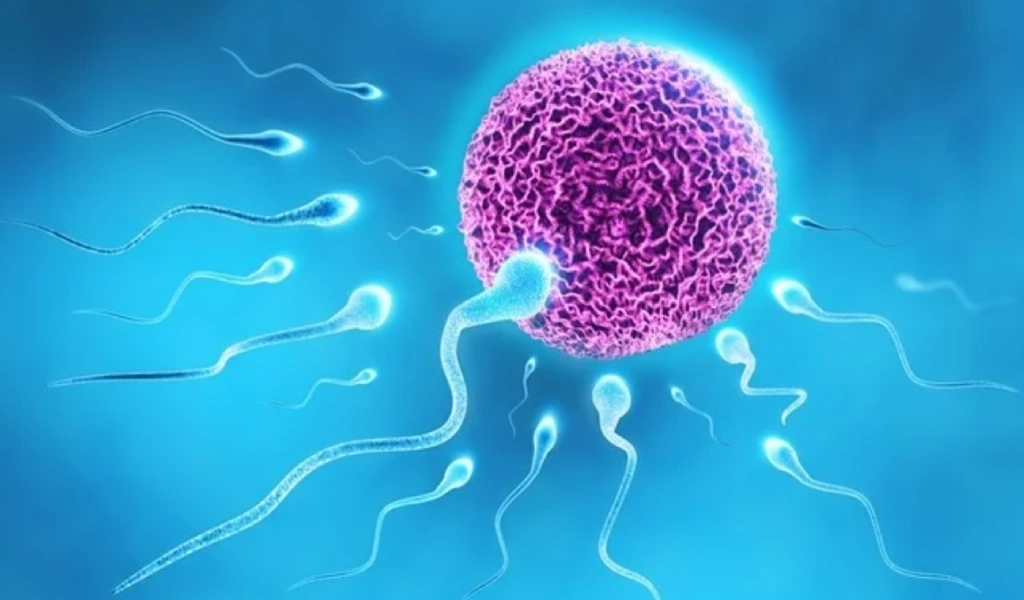A thick endometrium can lead to a variety of pregnancy symptoms, including periods that are longer and heavier.
The thickness of the endometrium during pregnancy is crucial in identifying potential complications during pregnancy. The endometrium is the inner lining of the uterus where the embryo attaches to begin pregnancy.
The thickness of the endometrium varies each month during pregnancy and is measured during imaging tests such as ultrasound scans. Doctors may examine the thickness of the endometrium to identify the potential reason for any unusual uterine bleeding during pregnancy.
The article ‘What is Endometrium Thickness In Pregnancy?’ discusses the typical thickness of the endometrium during pregnancy and the different deviations in thickness that can occur in the tissue.
What Is The Endometrium?
The endometrium plays a crucial role in the reproductive system. It functions as the inner lining of the uterus and is where the embryo implants. It is made up of a single-layered prismatic epithelium and cell-rich connective tissue with surrounding blood vessels, the endometrium also contains uterine glands. The epithelium has three types of cells – secretory cells, ciliated cells, and basal cells.
During menarche, the endometrium undergoes various changes in structure and function. When sex hormone levels fluctuate during ovulation, the endometrial lining thickness adapts to support fertilized egg attachment. If fertilization does not happen, the functional layer of the endometrium sheds, leading to menstrual bleeding.
Note: The structure and thickness of the endometrium stay the same before puberty and during menopause.
Typical thickness of the lining of the uterus
Premenopausal women have varying thicknesses of the endometrium during different stages of the menstrual cycle. The regular measurements of endometrial thickness are.
A study reveals that women with an endometrial thickness of 8-14mm had higher rates of successful implantation, clinical pregnancy, and ongoing pregnancy. Conversely, women with a stripe thickness of less than 7mm experienced lower pregnancy rates.
Endometrial thickness may serve as an indicator of a healthy intrauterine pregnancy in cases of vaginal bleeding and ultrasound detection of pregnancy with no confirmed whereabouts or other pregnancy issues.
The chart below provides a clearer understanding of how the thickness of the endometrium changes throughout the menstrual cycle.
What leads to the thickening of the endometrium?
Various factors can cause both pregnant and non-pregnant women to have an abnormally thickened endometrium.
A slight rise in endometrial thickness during pregnancy may suggest.
- Mola is capable of causing the endometrium to appear thick.
- There may be a pseudo gestational sac present.
- Retained products of conception could also be a factor.
- An endometrium that appears heterogeneously thickened could be the result of fluid collection.
- An intrauterine blood clot may be causing the heterogeneously thickened endometrium.
- A molar pregnancy might be the cause of the thickened endometrium, with multiple small cystic spaces present.
- Inflammation of the uterus, known as endometritis, may also be a contributing factor.
In women who are not pregnant, the causes may include.
- Thickening of the endometrium is a characteristic feature of endometrial carcinoma.
- Overgrowth of the endometrium can lead to endometrial hyperplasia.
- Benign growths on the endometrial surface are known as endometrial polyps.
- Changes in the endometrial surface due to Tamoxifen can result in variable appearances.
- Inflammation of the endometrium is referred to as endometritis.
What are the signs of a thickened endometrium that is not within the normal range?
Symptoms of a thickened endometrium, medically referred to as endometrial hyperplasia, may include.
- Increased blood flow during menstruation.
- Periods lasting longer than normal.
- A menstrual cycle that is less than 21 days or more than 38 days in length.
- Bleeding or spotting occurs between periods.
If you are having unusual vaginal bleeding and pelvic pain, it is advised that you see a gynecologist for a check-up.
How can an abnormally thick endometrium be identified?
Transvaginal ultrasound is useful for detecting unusual thickness of the endometrium.
What is the appearance of the endometrium?
The endometrium appears as a dark line on MRI or ultrasound scans, known as the endometrial stripe. The way the endometrial stripe looks and its thickness changes throughout the menstrual cycle.
During the menstrual and early proliferative phase, a thin and bright echogenic stripe is observed, which is made up of a basal layer with minimal fluid.
In the late proliferative phase, a trilaminar structure can be observed. This consists of the basal layer, the middle functional layer, and the inner echogenic stripe in the center.
Secretory phase: The endometrium reaches its maximum thickness during this stage. The lining appears to be uniformly echogenic in an ultrasound due to the presence of surrounding fluid.
What is the course of treatment for this condition?
It is recommended that you visit a doctor and have a conversation about possible treatment choices. The treatment plan will be based on the underlying reason for the thickening.
Why does the endometrium become thinner?
The thinning of the endometrium occurs due to disruptions in the regular growth of the endometrial tissues. Menopause is the primary factor leading to this condition, and it is a natural process.
Additional factors include
- Irreversible harm to the base of the endometrium.
- The endometrium surface receptors become less responsive to estrogen.
- Reduction in the blood supply to the endometrium.
- Excessive exposure to testosterone.
Is it possible for the thickness of the endometrium to serve as an indication of early pregnancy?
The thickness of the endometrium can be an early indicator of pregnancy, whether it is a normal or abnormal (ectopic) pregnancy. A study conducted found that endometrial thickness ranging from 8-40mm was observed in cases of intrauterine pregnancies with unknown locations. Within this range, 70% of women had an endometrial thickness between 13-25mm. Additionally, the study revealed that 70% of women with ectopic pregnancies had an endometrial thickness of less than 13mm.
The endometrium is an important tissue in a woman’s body that plays a vital role in the success of a pregnancy. Monitoring endometrial thickness during pregnancy is essential for doctors to assess the development and condition of the pregnancy, including any potential issues that could impact maternal health and fertility. It is important to be aware of changes in endometrial thickness as they could indicate problems like molar pregnancy, blood clots, or endometritis. If you experience any unusual symptoms, it is recommended to consult your doctor promptly for treatment and to avoid complications.
Key Pointers of ‘What is Endometrium Thickness In Pregnancy?’
- The thickness of the endometrial lining fluctuates when ovulation occurs to facilitate the implantation of a fertilized egg.
- The standard thickness of the endometrium can vary based on the phase of the menstrual cycle.
- Conditions like cancer can lead to an increase in endometrial thickness in women who are not pregnant.
- Menopause is the most common and natural reason for the thinning of the endometrium.












